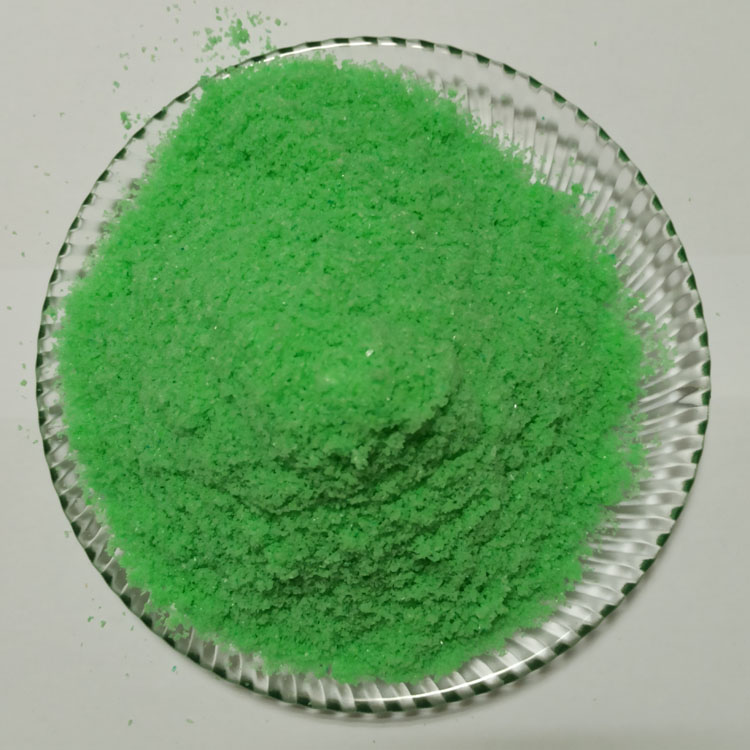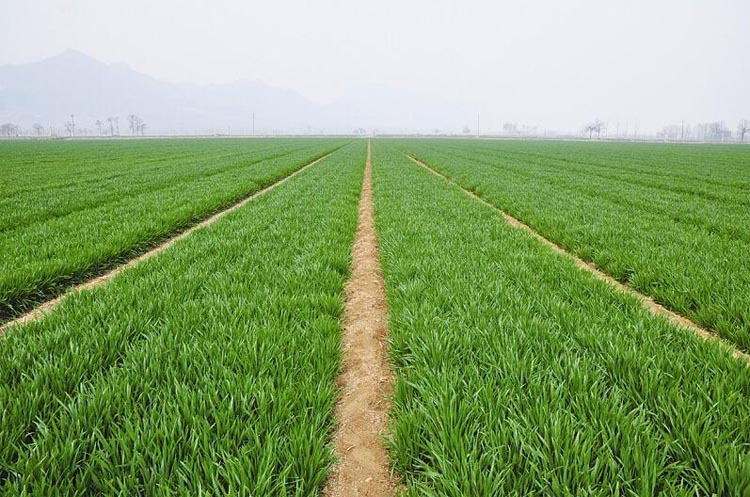Can wheat be re-green fertilizer, can it be water-soluble fertilizer?
VIEWS: times Release Date:2021-01-24
In the past two days, a farmer friend asked, can wheat be water-soluble fertilizer? Let me talk about how to use water-soluble fertilizer in detail. Finally, let's talk about whether wheat can be water-soluble fertilizer.

Water-soluble fertilizer has obvious advantages in improving fertilizer utilization, saving agricultural water, reducing ecological environmental pollution, improving crop quality and reducing labor. Let me introduce the fertilization techniques of water-soluble fertilizer.

Application skills of water-soluble fertilizer
Avoid direct flushing and take a second dilution.
Water-soluble fertilizers have higher nutrient content than general compound fertilizers, and the dosage is relatively small. Direct flushing can easily cause root damage to seedlings and weak seedlings. The second dilution is not only conducive to uniform fertilizer application, but also improves fertilizer utilization.
Apply a small amount multiple times.
Because water-soluble fertilizers are fast-acting and difficult to retain in the soil for a long time, a small amount and multiple times is the most important fertilization principle, which is in line with the characteristics of plant roots to absorb nutrients continuously and reduces the leaching loss caused by one-time large-scale fertilization. Generally, the dosage per mu is 3-6 kg each time.
Pay attention to nutrient balance.
Water-soluble fertilizer is generally applied by watering, spraying, or mixing it into water and applying it along with irrigation (drip irrigation, spray irrigation). What needs to be reminded is that when drip irrigation is used for fertilization, due to the dense and large growth of crop roots, the dependence on the nutrient supply of the soil is reduced, and it is more dependent on the nutrients provided by drip irrigation. If the formula of water-soluble fertilizer is not balanced, it will affect crop growth. In addition, water-soluble fertilizers must not be applied with traditional irrigation methods such as flood irrigation or flowing water irrigation to avoid fertilizer waste and uneven application.
Cooperate with application.
Water-soluble fertilizers are quick-acting fertilizers and generally can only be used as top dressing. Especially in conventional agricultural production, water-soluble fertilizer cannot replace other conventional fertilizers. It is necessary to combine base fertilizer with top dressing, organic fertilizer with inorganic fertilizer, and water-soluble fertilizer with conventional fertilizer to reduce costs and give full play to the advantages of various fertilizers.
Try to use it alone or in combination with non-alkaline pesticides. When vegetable deficiency or poor root growth occurs, many farmers often use water-soluble fertilizer to relieve it. Here is a reminder that water-soluble fertilizers should be used alone or mixed with non-alkaline pesticides as much as possible to prevent metal ions from reacting to produce precipitation, causing leaf fertilizer or phytotoxicity.
Avoid excessive irrigation.
When irrigating with fertilization as the main purpose, it is enough to reach the root depth and moist. The depth of the root layer of different crops is very different, you can use a shovel to dig the soil at any time to understand the specific depth of the root layer. Excessive irrigation not only wastes water, but also causes nutrients to be leached below the root layer, crops cannot absorb and waste fertilizer. In particular, urea and nitrate nitrogen fertilizers in water-soluble fertilizers (such as potassium nitrate, calcium ammonium nitrate, nitrophosphate and water-soluble fertilizers containing nitrate nitrogen) are easily lost with water.
Prevent the accumulation of surface salt.
Long-term use of drip irrigation in greenhouses or greenhouses will cause the accumulation of surface salt and affect the growth of roots. Drip irrigation under the film can be used to inhibit salt migration to the surface.
So, can wheat topdressing be water-soluble fertilizer? The quick-acting effect of water-soluble fertilizer can be used as a wheat topdressing, but its advantages are not better than urea in terms of cost and duration. Therefore, urea is better for wheat top-dressing, and water-soluble fertilizer is more suitable for commercial crops. Advantage.
Previous : Free samples of 52% water-soluble potassium sulfate (SOP)
Next : How to identify the quality of organic fertilizer products?
Latest News
- The company overcame difficulties and won a "good start" in the first quarter ...2022-03-28
- Safe Production ...2022-03-28
- first-line collection ...2022-03-26
- Huaqiang News ...2022-03-26
- Huaqiang Chemical Strong Agriculture Project ...2022-03-25
- huaqiang news ...2022-03-24
- winning unit ...2022-03-22
- Huaqiang News ...2022-03-21
Related Information
- The best fertilizers for fruits and crops ...2020-05-26
- Huaqiang Chemical Group NPK fertilizer pdf ...2020-04-01
- Humic Acid Fertilizer ...2019-12-31
- Bulk Blending Fertilizer ...2019-12-27
- Water Soluble Fertilizer ...2019-12-08
- NPK Fertilizer ...2019-12-02
- Potassium Sulfate Fertilizer ...2019-11-30
- Urea Fertilizer ...2019-11-21
MESSAGE
Our sales staff will be the first time to get in touch with you,to provide you with the latest price.
-
Chemical Products
-
Compound fertilizer
-
Contact Us
Huaqiang Chemical Group Stock Co.,Ltd.
No.1 Jinping Avenue, Dangyang , Hubei , China
Http://www.hq-chemical.com
info@hq-chemical.com
Tel:+86 717 3431866
Mobile: +86 18627120543
© Copyright 2021 Huaqiang Chemical Group Stock Co.,Ltd. All Rights Reserved



